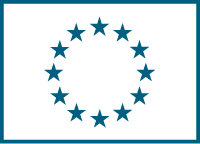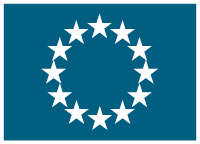BASHYCAT : Basic hydrometallurgy on catalysts
(BASHYCAT)
Date du début: 1 janv. 2006,
Date de fin: 30 déc. 2008
PROJET
TERMINÉ
Background
The European Directive 2001/81/CE, concerning oil products and gas emissions (NOx, S02, COV and NH3), describes maximum emissions for SO2, NOx and NH3. To meet the new environmental specifications (in particular, a maximum limit of 10 ppm of sulphur in gas and oil by 2009), catalyst used in EU refineries was predicted to increase by at least 3-4% a year up until 2010. At the same time, the increased demand for âlight oil cutsâ was expected to force refiners to install more refining capacities, rather than produce heavy gas-oil for power stations. Refining âheavy cutsâ into lighter cuts requires large volumes of short-cycle length catalysts, essentially to treat the pollutant vanadium. Spent catalysts are composed of Al2O3/SiO2, as well as valuable metals (Co, Ni, Mo and W) and pollutants (V, As, C, S and P). The catalysts are considered as very hazardous waste.
Objectives
The BASHYCAT project focused on demonstrating technology for recycling spent catalysts from refining cuts hydro treatment and also NOx-containing gas emissions catalysis (used in coal-fired heavy fuel thermal electric power station). BASHYCAT aimed to confirm the economic feasibility of regenerating part of the catalysts and implementing a recycling solution with a very high material recovery rate. The project set targets to achieve a 12 000 tonne capacity in 2010-2012, which was expected to satisfy about 15% of the EU needs and create 80-100 jobs.
Results
BASHYCATâs qualitative objectives were achieved and a complete recycling system was both implemented and validated during the project. Key technical lessons learnt during the project showed that the levels of residual sulphur and carbon after roasting were lower than expected. In addition, precipitated As and P were able to be filtered and the contaminated sludge was treated as hazardous industrial waste in landfill facilities. Only 903 kg of hazardous waste needed landfill disposal from the initial 10 tonnes of roasted catalysts. Other project outputs indicated that the extraction yield of Mo, Co and Ni was better than expected (>90%) for the different types of spent catalysts. Gas emissions were shown to contain mostly less than 50 mg of SOx/Nm3, and extracted S was able to be converted into a new end product (Na2SO4).
BASHYCATâs complete recycling process demonstrated its ability to help reduce demand for hazardous waste disposal, limit acid rain potential (via reduced atmospheric S emissions) and save natural resources (since end products of the recycling process provide quantities of Mo, Ni, V and W for reuse). By the end of the project, some 783 tonnes of Na2SO4, 720 tonnes of CaMoV and 501 tonnes of FeNiMo had been produced.
The gas treatment system developed during the project was noted as good practice by French inspection authorities and the BASHYCAT technology created a new industrial activity for the three project partners. Socio economic benefits stemming from the new developments included the creation of 20 jobs and longer term contracts have been signed to strengthen business partnerships. These involve a five year deal for recycling spent catalysts from EURECAT, which will lead to the processing of different catalyst materials (DeNox, NiMoV and NiW) from several European countries. A treatment capacity of 8 000-10 000 tonnes is forecast and this will make important contributions to the objectives of Directive 2001/81/CE concerning reduced sulphur in hydrocarbons and greenhouse gases.
Further information on the project can be found in the project's layman report and After-LIFE Communication Plan (see "Read more" section).




